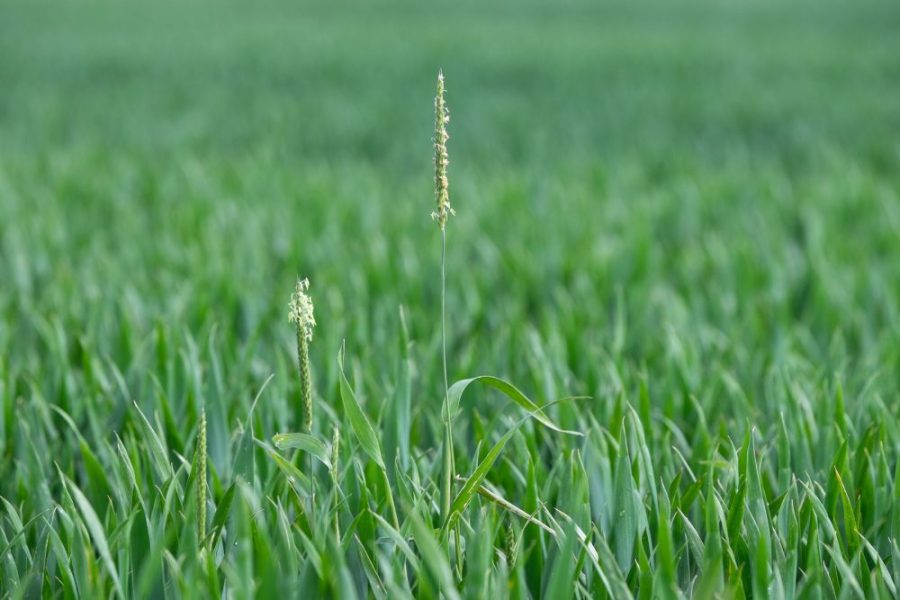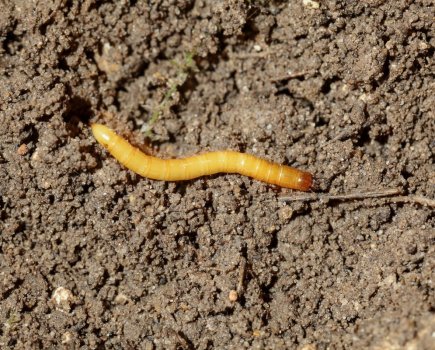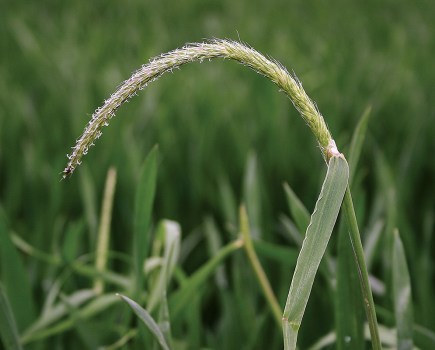
An important element of Stephen Moss’s ‘5 strategies for 5 years to beat blackgrass’ is to record, review and revise control measures. CPM finds out how on-farm trials can be set up and interpreted.
By Rob Jones
While there’s a wealth of advice available about different chemical and cultural techniques to control blackgrass, there’s no substitute for testing these measures on your own farm, according to independent blackgrass expert Stephen Moss.
“I’m wary about farmers placing too much reliance on work that’s been carried out on other farms because the success of any technique is dependent on conditions in each individual field. Post-emergence herbicides are affected by resistance which is field specific, so trial results from another farm may have limited relevance unless they’re backed-up by recent information on the blackgrass resistance status at the individual field level.
“Similarly, at the pre-em timing I believe that soil characteristics – especially clay content and organic matter – affect the performance of soil-acting herbicides, although there is little research into this at present. On some farms Liberator (flufenacet+ diflufenican) consistently outperforms Crystal (flufenacet+ pendimethalin), but on other farms the reverse is true.
“Because we don’t know all the soil factors that influence performance, the only way to be sure what is the best herbicide choice for you is to do a farm trial and check for yourself. The reasons for differences in herbicide efficacy between fields would be ‘nice to know’ but, for an individual farmer, all that really matters is what the differences are, rather than the reasons,” he says.
Effectiveness of mesosulfuron products
For spring post-em applications in wheat, the big question is how effective are the mesosulfuron products, such as Atlantis (mesosulfuron+ iodosulfuron) and its successor Monolith (mesosulfuron+ propoxycarbazone), a new herbicide for this spring. Resistance has taken its toll on some farms but in other locations there is still very good control – once again the only way to know the effect on a specific farm is to test the products in the field.
Bayer is encouraging growers to test Monolith performance on farm, says Bayer development manager Dr Gordon Anderson-Taylor. The company’s own trials show a 10% improvement in blackgrass control compared with Atlantis, coupled with more consistent performance against blackgrass with enhanced metabolism resistance.

Bayer trials show a 10% improvement in blackgrass control from Monolith compared to Atlantis, but Gordon Anderson-Taylor urges growers to try the new product out on their own farms.
“Monolith has two highly-effective grass weed actives in mesosulfuron and propoxycarbazone and we anticipate that farmers will see a noticeable improvement in blackgrass control, as well as excellent activity on brome where this is a problem.
“But we know it’s important to measure the control you get field by field, so we fully support farmers comparing Monolith with other post-ems like Atlantis and untreated areas to evaluate the improvement in control,” he adds.
Setting up a trial
For growers considering doing a weed control trial this spring, Stephen has the following advice on setting up the trial to get valid results. “First of all, make sure you plan the trial well in advance. Doing it last-minute, without preparation, isn’t likely to give you useful information. Most importantly, keep it simple because getting a robust answer to one question is better than a weak answer to many.
“You need to choose an area of land that has an even weed population rather than in patches. This area also needs to be consistent with respect to soil type and preceding cultivations and herbicides,” he advises.
“Ideally replicate treatments if possible (repeat in several different areas) rather than simply treating large blocks or half-fields. Doing the latter is easier, but not a reliable way of detecting differences.”

Stephen Moss gives some pointers on how to set up a farm trial to get meaningful results.
Accessibility is important for a trial because you need to be able to assess it and it can be interesting to keep an eye on progress throughout the season, advises Stephen. “It may be tempting to put it on the field edge, as it’s easy to get to, but then there’s a risk that edge- effects from hedges and trees might distort results – it’s better to site it within a field. An added consideration is that you can now use drones to view trials so avoid powerlines if this is the case.
Recording and analysing
“Always record what you’ve done, what you’ve sprayed and where. It sounds obvious, but it’s all too easy to think you will ‘remember’ the details but then can’t four months later when it’s time to assess the trial. Having very clear differences between treated areas, but then being uncertain about the exact treatments is, in many ways, a ‘worse than useless’ result. Also, mark out the trial accurately with canes and labels – don’t rely solely on GPS.
“Most importantly, before you even start the trial, think about how you’ll assess and possibly analyse the results. Will it be a simple visual assessment of two strips or will you use quadrants to do headcounts? If you’re comparing two products the differences may not be enormous, so you need to be confident in your assessment skills. It would be wise to get two people to do the assessing independently and then compare results to see if you come to similar conclusions. If you plan to take the trial to yield, think how you will do this,” suggests Stephen.
“Some people are much more gifted at picking out subtle differences in trials than others – if you don’t think this is your strength make sure you get some extra help in to get the best results from the trial. The final thing is not to rush to judge from the results of one trial, you need to repeat it in different fields and different years to confirm what you find. If you can get other farmers in the same area to do the same trial, then the results are likely to be much more robust. Co-ordinating trials and sharing/discussing results with neighbouring farmers can really pay dividends,” he concluded.
On-farm trial checklist:
· Plan well in advance
· Keep it simple
· Replicate treatments
· Accessibility is important
· Record what you’ve done
· Think about how you will assess results.
· Repeat in different fields, in different years
· Co-ordinate trials and discuss results with neighbouring farmers




